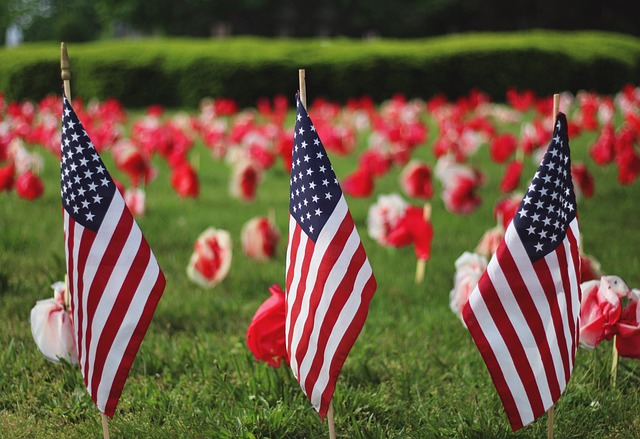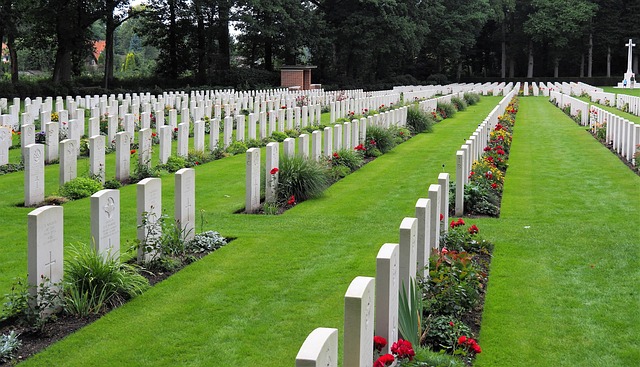Memorial Day was first proposed by General John Logan as a way to remember the Civil War troops who lost their lives. It was then known as Decoration Day. On May 30, 1868, 5,000 people gathered at Arlington National Cemetery to decorate the graves of almost 20,000 service members with flowers, marking the inaugural celebration. Though some scholars think the timing was perfect because it didn’t conflict with any war anniversaries, most experts believe General Logan chose that day to celebrate the inaugural Decoration Day because by then, flowers would be in bloom in both the northern and southern states.
General Ulysses S. Grant was one of the Washington officials in charge of the celebrations. Following the remarks, kids from various orphanages, including the Soldiers’ and Sailors’ Orphan Home, strolled around the cemetery placing flowers on both Union and Confederate graves while chanting songs and saying prayers. Many others arrived with a packed picnic lunch.
Memorial Day was not extended to remember all veterans who lost their lives in any American conflict until after World War I. Congress approved an act designating Memorial Day as a national holiday in 1971, renaming Decoration Day as such. President Lyndon B. Johnson shifted Memorial Day from May 30 to the final Monday in May of that year. In his formal announcement about the Uniform Monday Holiday Act, President Johnson stated, “This will enable families who live somewhat apart to spend more time together.”
The northern states were the first to officially declare Memorial Day a holiday, with New York leading the way. However, the southern states observed a separate day to pay tribute to the Confederate troops who had lost their lives. Memorial Day was redesigned to memorialize American soldiers who lost their lives in all conflicts after World War I, although the observances remained distinct until then. January 19 in Texas; April 26 in Alabama, Florida, Mississippi, and Georgia; May 10 in North and South Carolina; and June 3 in Louisiana, Kentucky, and Tennessee are among the southern states that still commemorate the Confederate dead.
I hope you have a meaningful Memorial Day
Even while it’s easy to say “Happy Memorial Day,” even if you don’t mean any harm in doing so, it’s crucial to understand the significance of the day before you do. On Memorial Day, we pay tribute to those who gave their lives while serving in the armed forces. Many people who lost loved ones in the service find that today is extremely personal, as the Code of Support Foundation notes. Some believe that wishing people a happy Memorial Day distorts the true meaning of the day, which is one of honor and memory. The Code of Support Foundation proposes an alternate greeting to “Happy Memorial Day”: “I hope you have a meaningful Memorial Day.”
Traditions for Memorial Day
Families take part in a variety of enjoyable Memorial Day events each year, but you can also respect a few meaningful Memorial Day traditions.

Memorial Day poppies: Inspired by John McCrae’s 1915 poem “In Flanders Fields,” people wear poppies on Memorial Day as a way of remembering America’s war dead. Moina Michael of the United States and Anna E. Guerin of France began selling artificial poppies as a means of raising money for children impacted by the war, having been inspired by the poem’s depiction of crimson poppies strewn over cross-shaped grave monuments. These days, a lot of Americans wear poppies as a symbol of respect on their shirts.
National Moment of Remembrance: In December 2000, President Bill Clinton signed “The National Moment of Remembrance Act” into law in order to guarantee that the sacrifices made by America’s fallen heroes would never be forgotten. The law calls on all citizens to observe a minute of silence on Memorial Day at 3 p.m. local time, wherever they may be, in remembrance of those who have lost their lives while serving their country.
Half-staff flag hanging: According to federal regulations, the flag shall only be flown at half-staff until noon, after which it should be flown at full staff until dusk.
Playing “Taps”: In 1862, a U.S. commander decided the bedtime bugle call should have a more upbeat melody. This was during the Civil War. Later, at a funeral, another officer substituted the bugle song for the typical rifle firing because he thought it may seem like an attack. “Taps” is now a customary component of Memorial Day festivities.

Visiting a local veterans cemetery: Some veteran cemeteries have beautifully manicured graves that have been adorned by family members. Bring flowers and place them next to a vacant grave. Alternatively, you may offer to tidy the graves of your dead comrades.
